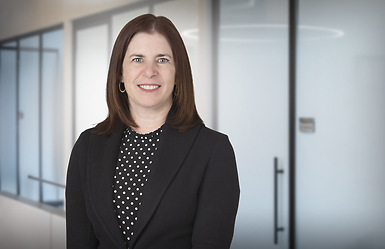Originally published in the January/February 2024 issue of Bench & Bar of Minnesota Environmental Law Update, Minnesota State Bar Association.
The U.S. Supreme Court recently denied certiorari in a case finding that a declaratory judgment on liability was sufficient to trigger the three-year statute of limitations for seeking contribution under section (g)(f) of the Comprehensive Environmental Response, Compensation, and Liability Act (CERCLA), 42 U.S.C. § 9613(f). Georgia-Pacific Consumer Products v. International Paper Company, No. 22-465, 601 U.S. __ (U.S. Oct. 2, 2023). The issue in the case was whether CERCLA requires more, such as a decision that imposes recoverable costs or damages, to trigger the Section 113 statute of limitations.
The case involved the Kalamazoo Superfund site in Michigan, which was contaminated with polychlorinated biphenyls, or PCBs, from over a century of paper mills operating in the area. The U.S. EPA added the site to the National Priorities List in 1990, and the same year, Georgia Pacific and two other paper companies not at issue in the current case entered an administrative order on consent with the state of Michigan to clean up the site. Five years later, in 1995, Georgia Pacific and the two other companies brought cost recovery actions under CERCLA section 107, 42 US.C. § 9607, against additional paper companies. The additional companies countersued. Following a trial, the district court in 1998 issued an order (1998 Liability Order) finding several companies including Georgia Pacific liable for the PCB contamination at the site. The 1998 Liability Order was a “bare bones” declaratory judgment on liability; it did not determine the amount of the costs or damages. Georgia-Pacific Consumer Products v. NCR Corporation, 32 F.4th 534 (6th Cir. 2022).
In 2010, Georgia Pacific filed an action under CERCLA section 113(f), seeking contribution for its response costs from three other companies—NCR Corporation, International Paper and Weyerhaeuser. At issue was whether the 1998 Liability Order had triggered CERCLA’s three-year limitations period for section 113(f) contribution actions. 42 U.S.C. § 9613(g)(3)(A) (providing that “[n]o action for contribution for any response costs or damages may be commenced more than 3 years after…the date of judgment in any action under this chapter for recovery of such costs or damages”). If so, Georgia Pacific’s contribution claims were time barred. Georgia Pacific argued that even if the 1998 Liability Order started the limitations period for contribution claims against some potentially responsible parties, it did not do so for NCR Corporation, International Paper and Weyerhaeuser, because they were not parties to the earlier litigation. In addition, Georgia Pacific argued that the bare-bones 1998 Liability Order did not trigger the section 113(g) three-year period because it was simply a determination of liability, not an action "for recovery of such costs or damages," § 113(g)(3)(A), as the judgment awarded no response costs or damages.
The Sixth Circuit disagreed. First, the court held that “[i]t does not matter for § 113(g)’s purposes whether the particular contribution action is pursued against a party to the liability-assigning judgment, or against a non-party to that judgment.” The statute focuses on “what was settled,” not “who settled the cost-recovery action” (emphasis in original) and thus bars actions beyond the statutory period against non-parties to the original judgment as well as parties. Second, the court was not troubled by the “bare bones” nature of the 1998 Liability Order. Acknowledging the lack of case law on the issue, the court looked to its 2007 decision on a closely related CERCLA provision, i.e., the three-year statute of limitations in 42 U.S.C. § 9613(g)(3)(B) that begins to run by entry of a judicially approved settlement. In RSR Corp. v. Commercial Metals Co., 496 F.3d 552 (6th Cir. 2007), the court held that a consent decree settlement with EPA regarding CERCLA liability was sufficient to trigger the limitation period, even though the amount of the costs or the identities of the possible contributing parties were not yet known. Based on this precedent, the court held that in the current case, the 1998 Liability Order had commenced the limitation period and Georgia Pacific’s contribution claims were time barred. The court summarized its holding as follows:
[W]hen a party assumes an obligation to pay response costs, including future costs, the statute of limitations for contribution actions regarding those response costs begins to run. And that is the case even when the specific amount owed in response costs is not yet known, or when all parties who could face contributory liability are not yet identified.
The significance of the Supreme Court’s decision to deny certiorari is that at least in the Sixth Circuit it leaves in place a requirement that parties held liable for Superfund response costs must bring actions for contribution even before the extent of the response costs is decided. Potentially responsible parties should thus consider bringing contribution actions against other potentially responsible parties at the earliest point possible after being found liable, without waiting until the payment of response costs is settled.



